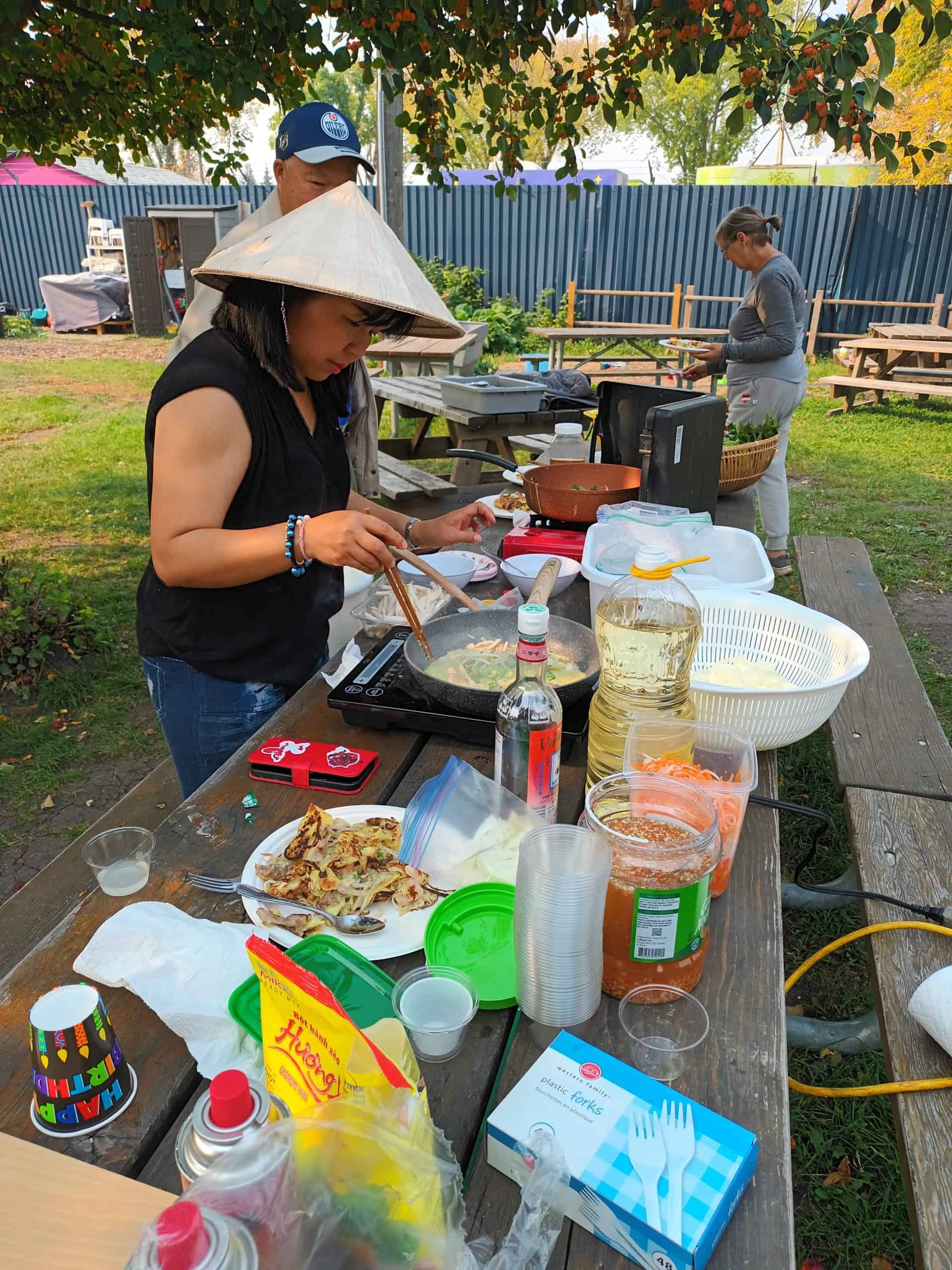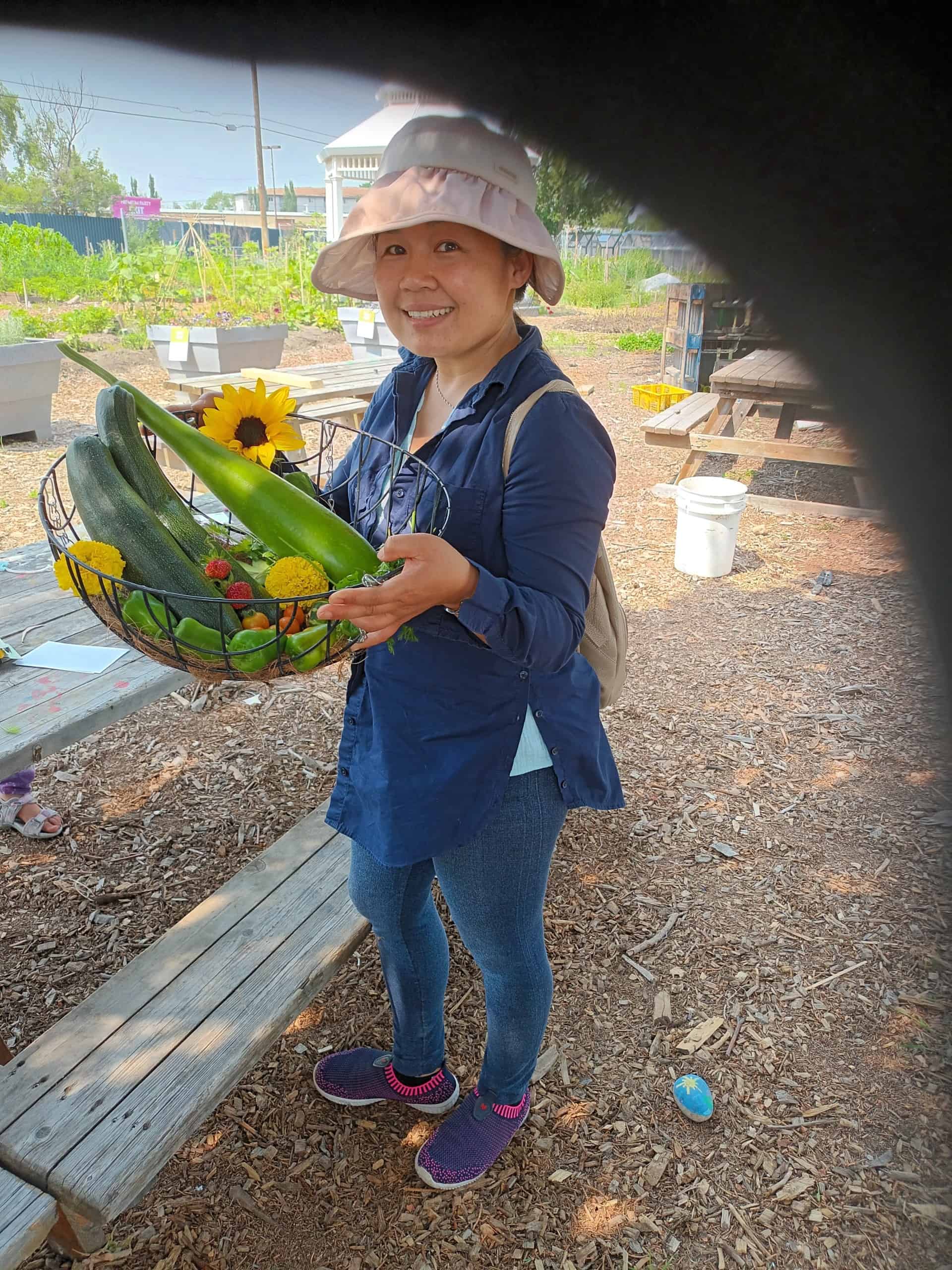A place for growing crops and community
It was a school field trip with her children that brought Esther Tran to the Urban Farm.
Part of the Vietnamese diaspora, Esther was fairly isolated during her first few years in Canada. The pandemic, school closures, and young children at home added to the isolation. Laughing, she said she learned English from a Korean friend who did Bible study with her at home. At the Edmonton Urban Farm, she found a place to thrive.
Esther’s garden plot is a work of art: Nestled among the plants are expressions of whimsy and colour, whether it be a green ceramic frog or a pink flamingo. Bitter melon and scarlet beans climb trellises that Esther has constructed from recycled and reclaimed materials. She also grows luffa and eggplant. These plants are more suited to growing in Zone 5 than Edmonton’s Zone 3, but she has a special process. “My house has two bathrooms, one is for starting plants. I learned from my grandmother and mother back in Vietnam, where we had a small kitchen garden,” she explains. “I start my plants two months before Mothers Day. I feed them compost tea and for those plants that require it, I do hand pollination.”


Mia Coco, Urban Farm staff member, describes Esther as a meticulous farmer and one of the farm’s most faithful participants. She’s always sharing information with other farmers, and her children participate in the Kids Club.
Esther is at the garden twice a day during our long sunlit summer days, often arriving right at sunup. Her hard work pays off. “I don’t need to shop at supermarkets during the summer,” she says. “I produce enough for myself and my children, and if I have surplus I share with my church.”
Every square inch of Esther’s allotment is put to use, and a layer of mulch covers the ground. Among the plants are rarities like heirloom tomatoes of many colours and a particularly yellow cauliflower. Natural pest management, like ginger, garlic, and chili, supports healthier plants, along with Esther’s psychology.
“I scold them. If they aren’t productive enough they get discarded. My focus is maximum productivity. I use different types of manure along with worm castings. I save seeds from the best plants and tell them what I expect for the season.”
These days, Esther is studying English at the Assist Centre. Like many newcomers, she hasn’t been able to put her Vietnamese university education (sociology) to use. But she found a way to share her knowledge at the Urban Farm preparing Vietnamese pancakes, sharing recipes, and working with other farmers. Esther is really a natural-born teacher. Once she is more confident in English, we might see her leading some pollination workshops.
Three ways to cook bitter melon.
- Fry it in oil with a little garlic.
- Cook fish in a pan. When it’s ready, place bitter melon in the pan and sauté quickly.
- Fry it in oil, add a pinch of sugar, and put it in a salad.







